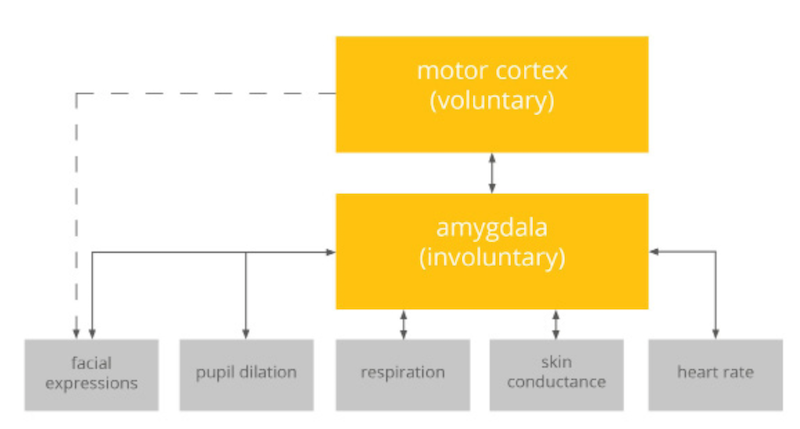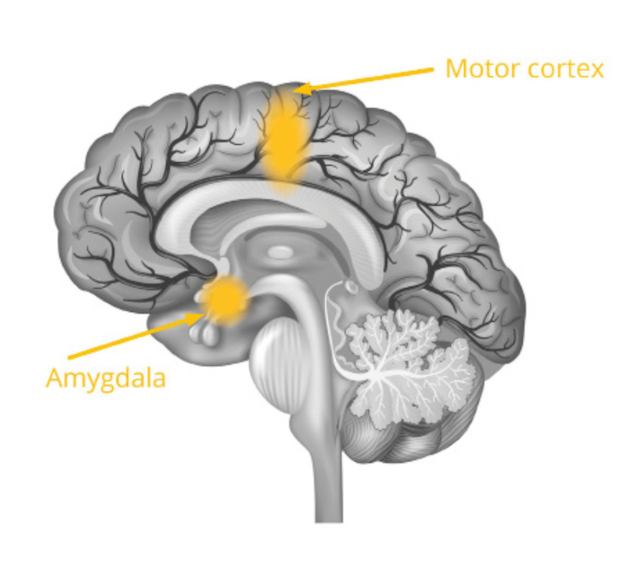Micro Expression
A microexpression is a brief, involuntary facial expression shown on the face of humans according to emotions experienced. They usually occur in high-stakes situations, where people have something to lose or gain.
Unlike regular facial expressions, it is difficult to fake microexpressions. However, no one can fake above a certain extent. Despite claims of effectiveness, many in the field of psychology regard using microexpressions with great skepticism since no peer-reviewed journal articles have been published on their use in lie-detection.
Microexpressions express the seven universal emotions: disgust, anger, fear, sadness, happiness, surprise, and contempt. They can occur as fast as 1/25 of a second.
The facial muscular system is the only place in our body where muscles are either attached to a bone and facial tissue (other muscles in the human body connect to two bones), or to facial tissue only such as the muscle surrounding the eyes or lips.
Obviously, facial muscle activity is highly specialized for expression - it allows us to share social information with others and communicate both verbally and nonverbally.
All muscles in our body are innervated by nerves, which route all the way into the spinal cord and brain. The nerve connection is bidirectional, which means that the nerve is triggering muscle contractions based on brain signals (brain-to-muscle), while it at the same time communicates information on the current muscle state back to the brain (muscle-to-brain).
Almost all facial muscles are innervated by a single nerve, therefore simply referred to as facial nerve. In slightly more medical terms, the facial nerve is also known under “VII. cranial nerve”.
The facial nerve emerges from deep within the brainstem, leaves the skull slightly below the ear, and branches off to all muscles like a tree. Interestingly, the facial nerve is also wired up with much younger motor regions in our neo-cortex (neo as these areas are present only in mammalian brains), which are primarily responsible for facial muscle movements required for talking.
Brainstem and motor cortex are specifically active dependent on whether a facial expression is involuntary or voluntary.
While the brainstem controls involuntary and unconscious expressions that occur spontaneously, the motor cortex is involved in consciously controlled and intentional facial expressions.
Exactly this is the reason why a fake smile just doesn’t appear natural, whereas a genuine smile most likely does. You might even realize another effect: Faking a smile doesn’t even feel right! Obviously, it doesn’t trigger the same emotional reactions in your body compared to an authentic smile.
Functional imaging studies (fMRI) have identified one specific region in the brainstem to be highly active when confronted with potential visual or auditory threats (a looming shadow or a high-pitched scream, for example):
The right and left amygdala.
Obviously, facial muscle activity is highly specialized for expression - it allows us to share social information with others and communicate both verbally and nonverbally.
All muscles in our body are innervated by nerves, which route all the way into the spinal cord and brain. The nerve connection is bidirectional, which means that the nerve is triggering muscle contractions based on brain signals (brain-to-muscle), while it at the same time communicates information on the current muscle state back to the brain (muscle-to-brain).
Almost all facial muscles are innervated by a single nerve, therefore simply referred to as facial nerve. In slightly more medical terms, the facial nerve is also known under “VII. cranial nerve”.
The facial nerve emerges from deep within the brainstem, leaves the skull slightly below the ear, and branches off to all muscles like a tree. Interestingly, the facial nerve is also wired up with much younger motor regions in our neo-cortex (neo as these areas are present only in mammalian brains), which are primarily responsible for facial muscle movements required for talking.
Brainstem and motor cortex are specifically active dependent on whether a facial expression is involuntary or voluntary.
While the brainstem controls involuntary and unconscious expressions that occur spontaneously, the motor cortex is involved in consciously controlled and intentional facial expressions.
Exactly this is the reason why a fake smile just doesn’t appear natural, whereas a genuine smile most likely does. You might even realize another effect: Faking a smile doesn’t even feel right! Obviously, it doesn’t trigger the same emotional reactions in your body compared to an authentic smile.
Functional imaging studies (fMRI) have identified one specific region in the brainstem to be highly active when confronted with potential visual or auditory threats (a looming shadow or a high-pitched scream, for example):
The right and left amygdala.

Emotient FACET
• Head orientation (yaw, pitch, roll)
• 6 facial landmarks (ADD eye and nose position)
• 7 basic emotions, valence; complex states: frustration, confusion
• 20 Action Units
• respondent’s sex and whether or not respondent wears glasses
Affectiva AFFDEX
• Head orientation (yaw, pitch, roll)
• Interocular distance and 34 facial landmarks
• 7 basic emotions; valence, engagement, attention
• 14 facial expression metrics (similar to Action Units)
Noldus FaceReader
• Head orientation (yaw, pitch, roll)
• 6 basic emotions; contempt (experimental), arousal, valence
• 20 Action Units
• Head orientation (yaw, pitch, roll)
• 6 facial landmarks (ADD eye and nose position)
• 7 basic emotions, valence; complex states: frustration, confusion
• 20 Action Units
• respondent’s sex and whether or not respondent wears glasses
Affectiva AFFDEX
• Head orientation (yaw, pitch, roll)
• Interocular distance and 34 facial landmarks
• 7 basic emotions; valence, engagement, attention
• 14 facial expression metrics (similar to Action Units)
Noldus FaceReader
• Head orientation (yaw, pitch, roll)
• 6 basic emotions; contempt (experimental), arousal, valence
• 20 Action Units


